Manoeuvres for the G2 Road Test and G Full
RIGHT TURN PROCEDURE - G2 - Road Test
- Plan your right turn well in advance. If necessary, change lanes early. Scan the intersection, paying special attention to pedestrians.
- Check your mirrors, signal, and check your blind spot.
- If the signal is RED, come to a complete stop before the stop line, just as you would at a stop sign. Otherwise, reduce speed and position your vehicle approximately 1 foot from the curb.
- Scan the intersection: look left, center, right, and left again. Yield to oncoming or surrounding traffic and pedestrians.
- Check your blind spot once more just before making the turn.
- Aim into the turn, looking well ahead. Use hand-over-hand steering, then straighten the wheel while accelerating smoothly, and merge with the flow of traffic.
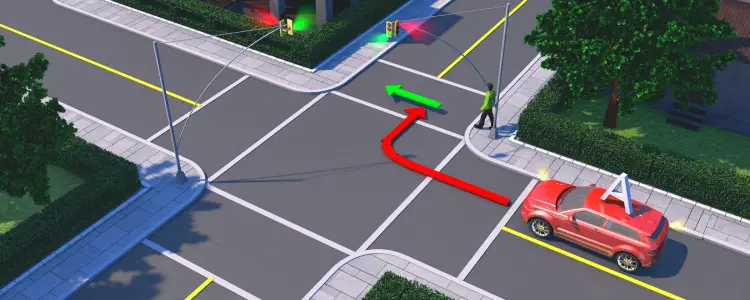
LEFT TURN PROCEDURE - G2 - Road Test
- Plan your left turn well in advance. If necessary, change lanes early.
- Scan the intersection. Check your mirrors, signal, and check your blind spot.
- Reduce speed as needed and move into the left turning lane in advance. If there are multiple turning lanes, make sure you are in the correct one by reading road markings and posted signs.
- If your turn is at a T-junction or an intersection with a stop sign, come to a complete stop just before the white line, keeping your wheels straight.
- Scan the intersection: look left, center, right, and left again.
- Yield to oncoming and surrounding traffic as well as pedestrians. If the light is green but there is oncoming traffic, move into the intersection and wait for a safe gap. Keep your vehicle and wheels straight while waiting — turning them too early could push you into oncoming traffic if hit from behind.
- Check your left blind spot again before turning. Aim into the turn, looking well ahead. Use hand-over-hand steering. If there is no traffic from either side, you may begin turning your wheel to the left to execute the turn. Straighten the steering while accelerating smoothly.
- As soon as it is safe, check your mirror, signal right, check your blind spot, and merge into the right lane.
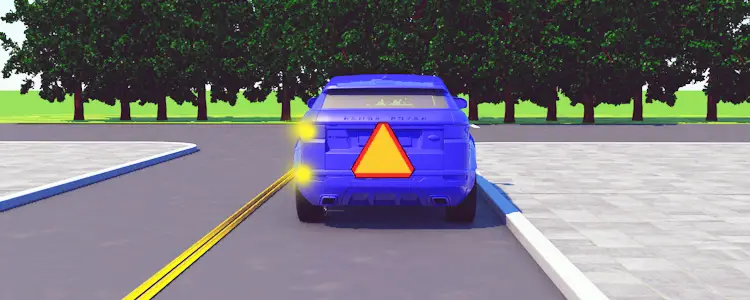
LANE CHANGING PROCEDURE - G2 - Road Test
- Plan ahead for when you want to change lanes. Look well ahead and make sure the lane you want to enter is clear.
- Check your rear-view mirror and ensure that vehicles in the adjacent lane are not too close. You should be able to see the full front (both headlights) of any vehicle in the next lane in your interior rear-view mirror — this ensures you have enough space to change lanes safely.
- Maintain or slightly increase your speed when changing lanes, but never exceed the legal speed limit. Do not slow down or brake during the lane change unless absolutely necessary.
- Check your mirror, signal, and check your blind spot before moving.
- Aim ahead into the selected lane. Steer smoothly into the lane while keeping your signal on until the maneuver is complete. Straighten the steering wheel when centered in the new lane. Cancel your signal and continue with the flow of traffic.
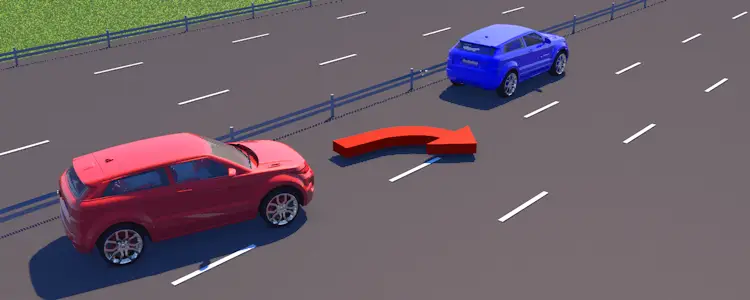
THREE POINT TURN - G2 - Road Test
- Plan in advance when you want to make a 3-point turn. Check your mirror to ensure no vehicle is immediately behind you. Signal right, check your blind spot, then move the vehicle close to the curb (within 30 cm) and stop.
- Check mirror, signal left, check blind spot, scan all around. Move forward slowly while turning the steering wheel quickly to the left. Stop before touching the curb.
- Select reverse gear ("R"). Check mirror, signal right, check blind spot, scan all around, aim backward. Move backward slowly while turning the steering wheel quickly to the right. Stop before touching the curb.
- Select drive gear ("D"). Check mirror, signal left, check blind spot, scan all around. Move forward slowly while turning the steering wheel quickly to the left and proceed if the way is clear.
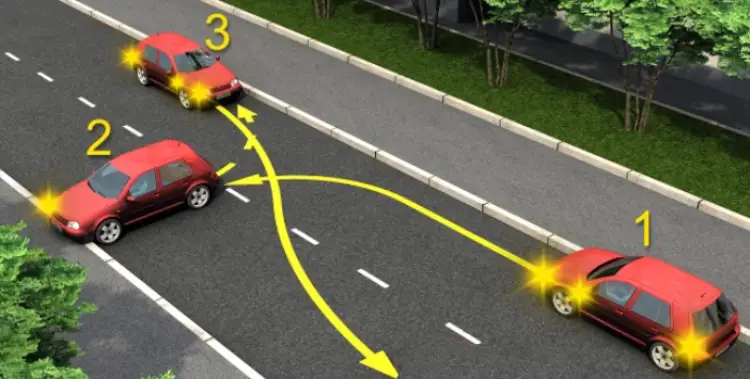
HILL PARKING - G2 - Road Test
- Plan ahead when you want to park on a hill. Check your mirror to ensure no vehicle is immediately behind you. Signal right, check your blind spot, and bring your vehicle within 30 cm of the curb.
- For uphill parking with a curb, turn your steering wheel fully to the left.
- For uphill parking without a curb, downhill parking with a curb, or downhill parking without a curb, turn your steering wheel fully to the right.
- Complete the parking procedure: select Park ("P") gear, engage the handbrake, and turn off the engine.
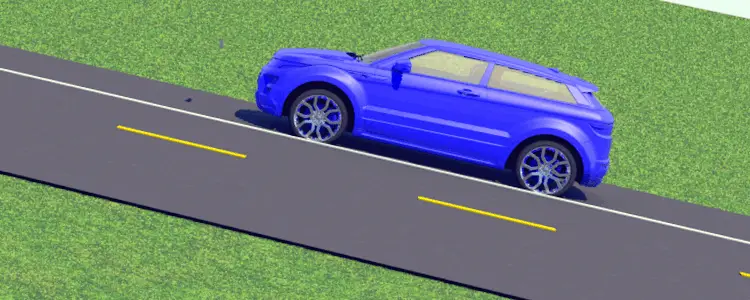
ROAD SIDE/EMERGENCY STOP - G2 - Road Test
- Plan ahead where you want to make a roadside stop.
- Before slowing down, check your mirrors and blind spots to ensure the way is clear.
- Turn on your signal before slowing down. Steer steadily to the side of the road, gradually reducing speed, and stop parallel to the curb or edge of the road. You should be no more than about 30 centimetres away from it. Do not stop where you would block an entrance or obstruct other traffic.
- Turn off your signal and turn on your hazard lights.
- Put the gear selector in Park ("P") and set the parking brake.

STALL PARKING (BACK IN) - G2 - Road Test
- Remember MSB once (Mirror, Signal, Blind Spot) before starting stall parking (back-in).
- Plan in advance where you want to park. Check your mirror, signal in the direction of your turn, and check your blind spot.
- Stop your vehicle two spots ahead of the desired parking space and align your side mirror with the last line of the stall.
- Select reverse gear ("R"). Scan all around.
- Move backward very slowly. Steer sharply (hand-over-hand) to the right. Straighten your wheels when parallel to adjacent vehicles.
- Select Park ("P") gear and engage the parking brake.
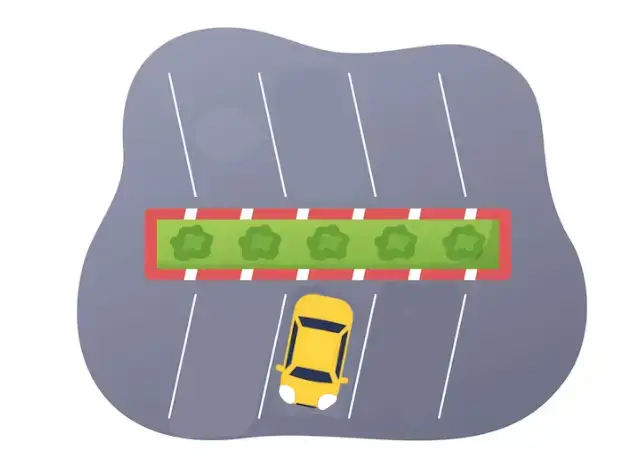
STALL PARKING (FRONT IN) - G2 - Road Test
- Plan in advance where you want to park. Check your mirrors, signal in the direction of your turn, and check your blind spots.
- Stop your vehicle and align your side mirror with the starting line of your intended parking spot.
- Steer sharply (hand-over-hand) in the intended direction. Straighten your wheels when parallel to adjacent vehicles.
- Select Park ("P") gear and engage the parking brake.

FREEWAY DRIVING ENTERING - G Full - Road Test
Maintain
- Maintain a minimum following distance of 3+ seconds from the vehicle ahead before the ramp.
- Check the recommended safe speed on the entrance ramp. As you drive along the freeway entrance ramp, look ahead, check your mirrors and blind spots to assess traffic and find where you will merge into the nearest freeway lane.
- When leaving the ramp and entering the acceleration lane, signal and increase your speed to match the freeway traffic, merging smoothly. Move over if it is safe to do so, leaving room for other vehicles merging.
DRIVING
- Maintain a following distance of 4+ seconds under ideal conditions, and increase the distance under adverse conditions or when following large vehicles. Keep to the right lane unless you are passing another vehicle.
- Make decisions well in advance. Check your mirrors and blind spots, and communicate your intentions clearly and timely. On the freeway, assist other drivers who wish to enter by changing lanes (if possible) or adjusting your speed.
- Scan ahead for at least 20+ seconds to identify potential hazards and obstructions.
EXITING
- Decide well in advance which exit ramp you intend to take. Check your mirrors, signal in the direction of your intended path early, and check your blind spot. Move into the correct lane well before the exit.
- Do not slow down on the freeway until you are in the deceleration lane.
- Reduce speed after entering the deceleration lane. Check your speedometer to ensure you are driving slowly enough on the exit ramp, and maintain a 3-4 seconds following distance from any vehicles ahead.
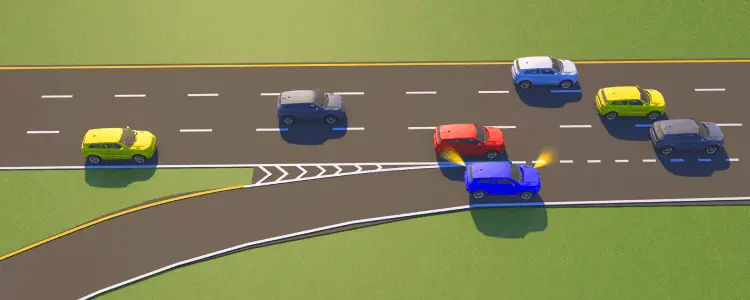
PARALLEL PARKING – G2 – Road Test
- Plan ahead where you want to parallel park. Check your mirror, signal right, and check your blind spot. Ensure the parking space is large enough for your vehicle.
- Pull up alongside the vehicle in front of the parking space, leaving about 1 metre (3 feet) between your vehicle and theirs. Align your rear bumper with their rear bumper (or mirrors with mirrors, depending on vehicle size).
- Select reverse gear ("R"). Check all mirrors, signal right, check your blind spot, and scan all around for traffic and pedestrians.
- Begin reversing slowly. Steer sharply to the right (hand-over-hand) until your vehicle is at about a 45-degree angle to the curb.
- Straighten your wheels and continue reversing until your front bumper clears the back of the vehicle ahead.
- Steer sharply to the left (hand-over-hand) while continuing to reverse slowly, aiming to bring your vehicle parallel to the curb.
- Stop when your vehicle is within 30 cm (1 foot) of the curb and centered in the space.
- Select Park ("P") gear, engage the parking brake, and turn off your signal.

YIELDING TO EMERGENCY VEHICLES – G2 – Road Test
When NOT at an intersection
- Stay alert for flashing red/blue lights and sirens — check your mirrors regularly.
- As soon as you notice the emergency vehicle, check your mirrors, signal right, and check your blind spot.
- Move as far to the right side of the road as safely possible and stop completely. Keep parallel to the curb, within about 30 cm.
- Remain stopped until the emergency vehicle has fully passed and it is safe to rejoin traffic.
- Cancel your signal, check mirrors, signal left if necessary, check your blind spot, and merge back into the lane.
When AT an intersection
- If you are stopped at a red light, do not enter the intersection. stay where you are, keeping lanes clear if possible, and wait until the emergency vehicle passes.
- If you are approaching a green light but the emergency vehicle is coming, slow down, check mirrors, signal right, and pull to the right before the intersection — then stop completely.
- If you are already in the intersection when the emergency vehicle approaches, clear the intersection as quickly and safely as possible (complete your turn or cross), then immediately pull over to the right side of the road and stop.
never block the intersection. remain stopped until the emergency vehicle has passed and the way is clear.
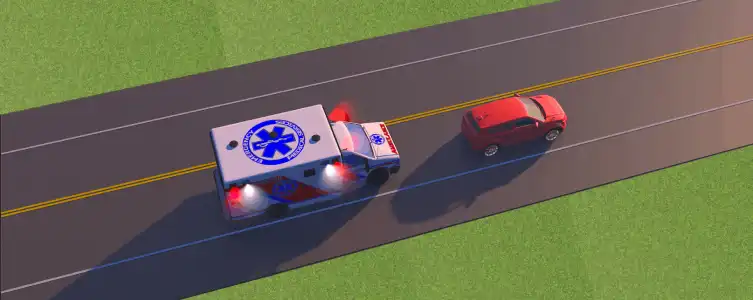
Best Apps to Prepare G1 test Ontario 2025 With
If you want to prepare for free and pass the test on your first try, you should use the G1 Test Ontario app by Nikel Studio. Unlike other apps, it gives you full access to all the tests right away — no paywalls or limits like "two free tests, then pay." The app features a dashboard where you can track your score and progress in real time. It also offers helpful hints, which make it easier when you’re just starting out and the tests are completely new to you. Plus, there’s a shuffle mode and a timer option so you can practice exactly like it’s the real exam. Throughout your whole journey, motivational support keeps you engaged and makes studying less boring. Just take a look at the reviews — thousands of people have shared how they passed thanks to this app! That’s pretty amazing.

How to Pass the G1 Test Ontario– Full Guide from Inside DriveTest. Step by step. What to Expect.
- English🇬🇧, G1 French🇫🇷, G1 Chinese🇨🇳, G1 Spanish🇪🇸, G1 Russian🇷🇺, G1 Punjabi, G1 Persian 🇮🇷, Portuguese are available.





